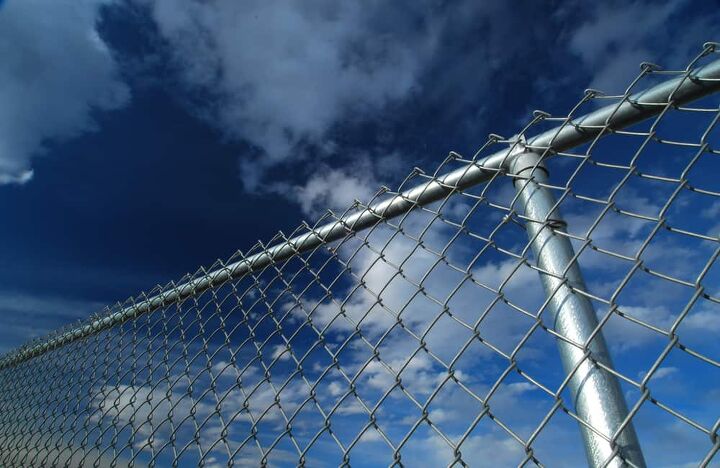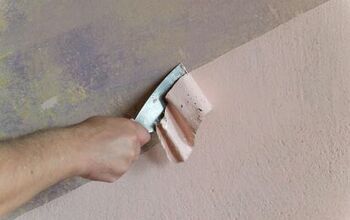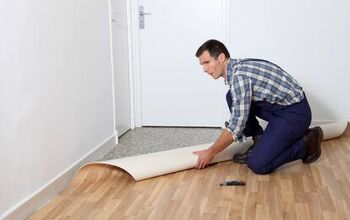How To Remove A Metal Fence Post From Concrete Or Soil

Good fences make good neighbors. But what happens when a fence falls into disrepair, or you want to make an aesthetic change? Removing an old fence post might be the most challenging part of the job.
To remove a metal fence post set in dirt, some strong muscles, a shovel, and patience will do the job. To remove a metal fence post set in concrete, you can pry it out with a car jack, tractor, or lever made from lumber. If it’s set in continuous concrete, you may need some heavier machinery, like a jackhammer.
Do You Need Fence Installation or Repair Services?
Get free, zero-commitment quotes from pro contractors near you.

Why Do You Need to Remove a Metal Fence Post?
Whether you have a wood fence or a chain-link fence, metal posts provide excellent structural stability. That is until something goes wrong. Maybe your fence runs alongside a big tree. Mother nature is powerful enough to do many things, including bend metal. Do you have a crooked fence post due to shifting soil or tree roots? If so, then the proper way to fix it is to remove and reinstall it.
If the post is attached to an existing chain-link fence, remove all other fence parts before tackling the pole. This will make removing the post safer and more manageable without extra metal flapping about.
How to Remove a Metal Fence Post Set In Soil
It’s always best to start simple. If the post is set in the earth with no concrete base, this removal will be straightforward. But that doesn’t mean it will be easy– get ready for some manual labor.
Dig 12 inches down into the soil in a circle around the fence post. Rock the post back and forth to loosen it using your body weight or a sledgehammer. Eventually, you should be able to lift the post out of the ground.
If the post doesn’t easily lift out, you may need to dig deeper. Some installed fence posts are at least two feet deep. While you may not need to dig to the base to loosen it, you may need to get close.
How to Remove a Metal Fence Post Set In a Concrete Block
If the post is set in a block of concrete, you might assume to remove the pole from its foundation. But in fact, it’s best to remove both parts together instead of separating the metal post from its concrete foundation.
The spacing of different kinds of fences varies, so you may find that some posts are set differently than others. Metal posts from the middle sections of a fence are often easier to remove than the end posts. Middle supports may require a smaller amount of concrete, while you can set end posts in heartier blocks. So if you’re taking out several posts, start in the middle to perfect your technique and work your way out.
There’s even a way to remove posts and their bases without having to dig out around the concrete. Digging can be very time consuming and involve a lot of manual labor. Work smarter, not harder!
The Rebar Method
- Drill a ½-inch wide hole through the post you’d like to remove. This hole should be close to the ground but with enough room to work. Four to six inches above ground level is ideal.
- Insert a piece of ⅜-inch rebar through the hole. It should be long enough to grip well on each side. About a foot of length on each side will work.
- Hook a chain around both ends of the rebar. Use a chain that’s strong enough not to break under the tension of uprooting the post.
- Attach the chain to a long piece of 4×4 lumber. A ten-foot-long piece will do.
- Using a cinder block as a fulcrum, pry the post out of the ground using the 4×4 as a lever.
Some Alternatives
- You can use a car jack to pry against the rebar instead of a 4×4 and a cinder block. It all depends on what tools you have at your disposal.
- If you have a tractor or truck, you can hook the chain connected to the rebar to your vehicle. Using the strength of your vehicle to pull up the post will save your body some stress.
- If you don’t want to drill through the post or are unable to, try attaching a large C-clamp where the hole would be. You can then use a hi-lift jack or car jack to push the post up and out of the ground.
Other Tools You Can Use to Remove a Metal Fence Post
- Try using a specialty post-puller tool. You can often rent this tool from home improvement stores or heavy equipment rental companies.
- If you only have the simplest of tools available, a shovel is all you need. You can always dig around the circumference of the concrete foundation to expose the concrete block.
- Wetting the soil around the post with a garden hose can loosen dirt that’s packed too tightly to break through. Just be warned that water will make it messier and the soil heavier to lift.
- Try using torque instead of lift; sometimes, turning the post is more effective than pulling. Grip the post with a large pipe wrench or vice, and push against it to turn it. Once it moves, try pulling up and out to remove the post and base.
How to Remove a Metal Fence Post Set In a Concrete Pad
A concrete pad makes a post much more challenging to remove than just a block. Instead of dealing with a few square feet of concrete, the post may be set in continuous concrete. Unfortunately, you can’t break this up as easily as you can a concrete block.
If the post is set in continuous concrete, you have a couple of choices.
Pry and Pull
Try to pry and pull as in the steps above. This method is most effective if the other end of the post goes all the way through the concrete slab. Then, the other end will be loose. With some strong back-and-forth movement and some vibration, there’s a small chance it will begin to loosen.
Try a Jackhammer
Speaking of vibration, try a jackhammer. You can rent one from a home improvement store if you don’t happen to have one hanging around your home. Cut away the concrete in a circle around the post.
Keep trying to move the post back and forth as you chip away the concrete. You may not need to go all the way through the foundation to loosen the post enough to remove it.
Note: Don’t forget! Wear goggles, ear protection, gloves, and steel or composite toe boots when operating a jackhammer. Safety first!
Try a Sledgehammer
Using a sledgehammer requires some serious muscle but can be a useful tool. Using it to break up concrete isn’t ideal if the concrete is super thick. However, you can use it to knock the post back and forth to loosen it. Use this tool in conjunction with other methods, like the jackhammer.
If All Else Fails, Cut the Post
If pulling the post proves to be fruitless, you can cut off the post as flush to the concrete as possible. Using a Sawzall, reciprocating saw, or angle grinder, get as close to the ground as your tool will allow. Then, use the tool to cut the post off at the base.
Repairing the Concrete
To cover the remaining stub of a post, you can float concrete over it. This small concrete hill isn’t ideal in many cases. But it’s safer than having metal poking out of the ground.
If you need the ground to stay smooth and flush, chip away the concrete around the post. Use a jackhammer so your tool can cut further down on the post. Fill the hole, cover the post stub with concrete, and then float it flush with the existing surface.
Do You Need Fence Installation or Repair Services?
Get free, zero-commitment quotes from pro contractors near you.

Related Questions
You mentioned removing the chain link fence before trying to remove the post. How do I do that?
You’ll need to use a strong pair of wire cutters or tin snips. Cut the ties holding the chain link fence to its support posts. Carefully remove the chain link, laying it flat on the ground and rolling it up for storage or disposal later. If you have plenty of space and a buddy to help you, you can reuse the chain link. Simply roll up the chain link along the length of the fence as you remove it. This process will allow you to keep the whole run of chain link fence intact so you can reuse it.If you’re working in a tight space and don’t have enough space to lay the fencing out flat, work smaller. Cut the fence vertically every six feet or so, and roll the sections of chain link vertically. This is also a great solution if you’re working solo and have trouble wrangling the fence’s length alone.Once you’ve removed the chain link sections, disassemble the top rail. Using an adjustable wrench, loosen the bolts that connect the top rail to the end posts. Slide the sections of rail apart.
How do I dispose of a chain-link fence and metal post once I remove it?
You have a few options for the disposal of fencing materials. It can be reused, recycled, or collected with bulk trash pickup. Your trash may be someone else’s treasure. If the fence is in good condition, try listing it on a neighborhood message board online. Someone may be interested in taking it for a project of their own– and you may even make some cash!If reuse isn’t in your fence’s future, you can recycle it. Check with local scrap metal yards to see what their policies are concerning your type of fence. Sometimes they charge a fee to make a drop-off; other times, they’ll pay you for certain types of metal. In many cities and towns, some folks collect scrap metal and recycle it for the cashback. Depending on where you live, the chances are high that someone will pick it up from your curb. It’s a win-win: cash for them and hassle-free disposal for you!If all else fails, call your municipality to schedule a bulk trash pickup. They have regulations on what you can dispose of, how often, and in what quantity. Make sure you read all the fine print!
Related Guides

Stacy Randall is a wife, mother, and freelance writer from NOLA that has always had a love for DIY projects, home organization, and making spaces beautiful. Together with her husband, she has been spending the last several years lovingly renovating her grandparent's former home, making it their own and learning a lot about life along the way.
More by Stacy Randall























![10 Most Dangerous Neighborhoods in Baltimore [Updated]](https://cdn-fastly.upgradedhome.com/media/2023/07/31/9075655/10-most-dangerous-neighborhoods-in-baltimore-updated.jpg?size=350x220)



